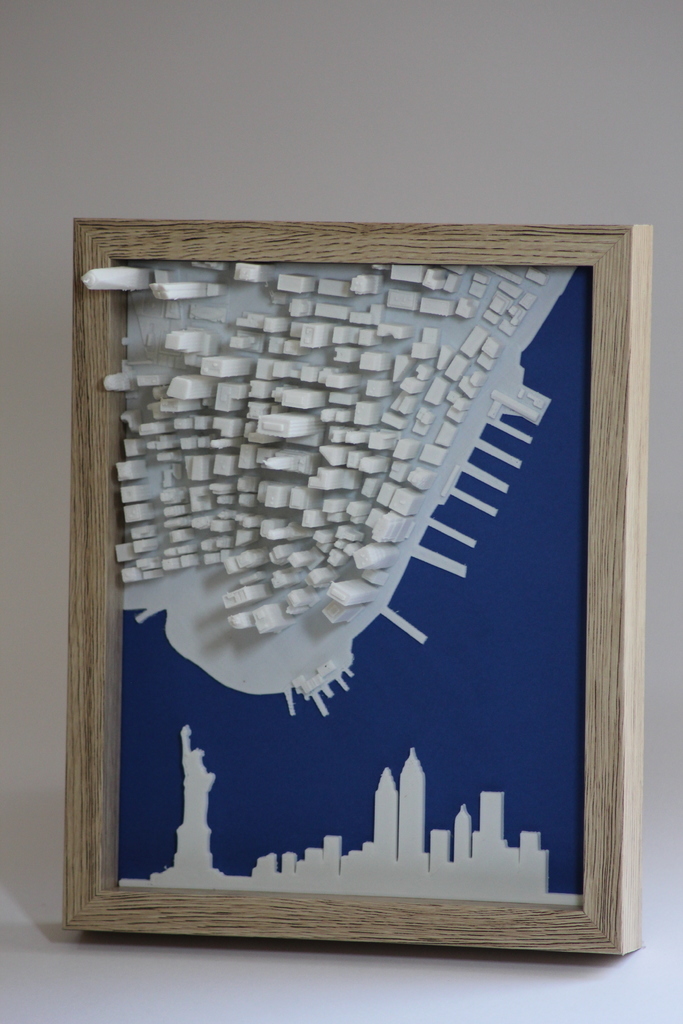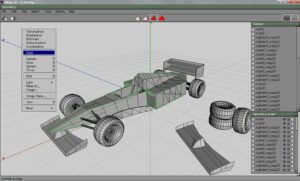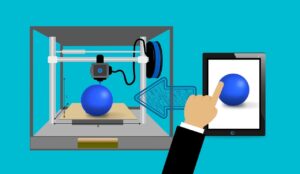Delve into 3D model remixing, a captivating form of expression. With free models to customize, creators can bring their visions to life! This article explores the possibilities of remixing and showcases the talent behind these creations.
Uncover a realm of creativity and innovation. Artists and designers take advantage of the free models available online. They modify textures and proportions of the models, transforming them into something entirely new.
Marvel at the attention to detail that artists invest in their creations. Every change requires careful understanding of the original model’s structure and functionality. Artists dissect and reassemble elements, ensuring each modification aligns with the overall design. This meticulous approach leads to stunning transformations.
An example of the power of remixing is the artist who revolutionized character design. They took a popular video game character and remixed it with elements from different influences. This created a completely unique avatar that was praised. This success shows how remixing can take an existing concept to new heights.
As we explore 3D model remixing, uncover boundless potential for artistic exploration. Creators continue to blend diverse styles and concepts. Through their imagination and skill, they remind us that art is not limited by boundaries!
Understanding Remixing: Explaining the concept of remixing and its relevance in the world of 3D models.
Remixing 3D models is an interesting idea. It lets designers and artists customize existing models to create something new. They can add/remove elements, adjust textures/colours, or even change its purpose. This process encourages creativity and saves time compared to starting from scratch.
Remixing also fosters collaboration and community engagement. Artists share their remixes with others, who can then modify them further. This leads to a chain of creativity, which promotes learning and sharing.
It is important to understand licensing agreements for the original models, so remixes comply with legal requirements. Good communication with other artists is essential when sharing or modifying their work. Seeking permission and providing clear attribution shows respect and helps people discover the original creators.
Finding Free 3D Models: Providing tips and resources for discovering free 3D models available for customization.
Are you searching for free 3D models to customize? Here are five points to think about:
- Marketplaces like Thingiverse, Cults3D, and GrabCAD have a huge variety of free 3D models created by talented designers from all over. These sites let you filter your search using criteria like file format, category, or popularity.
- Joining 3D printing forums is a great way to discover free 3D models. Members usually share their creations and provide download links for others. Plus, these forums are a great spot to connect with other fans and get advice or guidance.
- Many open source projects release their design files with licenses that allow customization. Platforms like GitHub contain plenty of repositories with freely editable 3D models designed by individuals or teams.
- Following hashtags connected to 3D modeling/printing on social media, like Instagram or Twitter, can lead you to free 3D model giveaways or contests. It’s a great way to stay current and find new talent.
- Libraries and educational institutions are digitizing their physical object collections, making them available as 3D printable models online. You may find historical artifacts, scientific specimens, or architectural landmarks ready for customization.
Remember, most of these sites offer free access to the 3D models, but some may require registration or attribution based on the specific licensing terms for each file. Plus, a report by Sculpteo says 55% of 3D printing professionals mainly use online marketplaces like Thingiverse and MyMiniFactory for free 3D models.
Tools and Software: Introducing the necessary tools and software required for remixing and customizing 3D models.
Unlock your creative potential in the world of digital design by introducing the necessary tools and software for remixing and customizing 3D models. Experienced artist or beginner, having the right options can make all the difference!
- 1. 3D Modeling Software – Blender, Autodesk Maya, and SketchUp are popular choices. Easily manipulate existing models.
- 2. CAD Software – For advanced customization, use SolidWorks or AutoCAD. Commonly used in engineering and architecture.
- 3. Sculpting Software – ZBrush or Mudbox to add organic shapes with real-life sculpting techniques.
- 4. File Conversion Tools – MeshLab or FBX Converter so your chosen software is compatible with existing 3D models.
Enhance remixing with online resources such as Thingiverse and MyMiniFactory. Explore different combinations of tools and software to discover new ways of creating unique 3D models. Unleash your artistic spirit and let your remixing journey begin!
Step-by-Step Instructions for Remixing: Breaking down the process of customizing free 3D models into actionable steps.
Breaking down customizing free 3D models into steps makes unique designs. Here’s a guide to get you started:
| 1. Find a Free 3D Model: | Search for a free 3D model that suits your needs. Websites have collections of objects, characters, and more. |
| 2. Import the Model: | Download and import the perfect 3D model into your modeling software. Make sure the file format is compatible. |
| 3. Customize and Remix: | Use creativity to modify the existing model. Change its shape, size, texture, color, or add new elements. |
Experiment with different features, or incorporate elements from other models. Try alternative materials or unconventional proportions to create stunning designs.
Showcasing Examples: Showcasing examples of successful remixing projects and highlighting the creativity and possibilities of this art form.
The art of remixing free 3D models is a great way for artists to express their talent and explore limitless options. Customizing these models lets artists tap into their imagination and produce beautiful art. Here are five remarkable examples:
- An artist changed a simple car model into a modern one, full of advanced technology and smooth designs.
- Another artist combined components from various models to create a unique character with its own personality.
- A landscape model was remixed with trees, flowers, and waterfalls, making the scene come alive.
- A designer used multiple furniture models to form a custom living room for a client’s needs and style.
- Finally, animal models were combined to make imaginative creatures.
Furthermore, artists have managed to integrate functional features like moving parts and interactive elements into their remixes. This shows their creativity and technical ability in manipulating models.
It’s amazing to note the growth of this art. Artists continue to take on new projects, experimenting with different styles, concepts, and techniques. With each new project, they motivate others in the community while pushing the boundaries of this art form.
Fun fact: Creative Commons claims over 2 million free 3D models are available on different online platforms.
Tips and Tricks: Offering additional tips, tricks, and best practices for achieving excellent results in remixing 3D models.
Remixing 3D models can be fun and rewarding. Here are some great tips for success:
- Source high-quality models: Get models that have clean topology and proper UV mapping. This will make it easier to modify them later.
- Check the license: Make sure the model you’re using is released under a license that allows for modification. Follow the terms and conditions set by the creator.
- Plan: Decide which parts to modify or add before starting. Think how these changes fit in with the existing elements.
- Communicate: If you’re remixing someone else’s work, contact them. They may have ideas that help your remixing process. Collaboration can lead to better results.
- Try different software tools: There are various software tools available for 3D modeling and remixing. Explore options and don’t be afraid to try new techniques.
- Test: Once you’ve done your modifications, test extensively. Look for issues like overlapping meshes or broken textures. Adjust until you’re satisfied.
Look for small details too, like lighting and materials. These can affect the result without extra effort.
Other suggestions:
- Look for similar remixes: See what works well in other remixes similar to yours. Consider incorporating similar elements.
- Document: Keep track of modifications, notes and references. This helps you stay organized and serves as a learning resource.
- Seek feedback: Share your remixed 3D model and request constructive feedback. Get insights from experienced artists.
Follow these suggestions and pay attention to the details. You can create something unique and amazing. Enjoy the journey of transforming existing models into something special.
Conclusion: Summarizing the article and encouraging readers to explore the art of remixing to unleash their creativity in the world of 3D modeling.
Unleash your creative potential in 3D modeling! By customizing free 3D models, you can create unique designs. This is the art of remixing. It blends existing designs with your own touch! You can explore different ideas and experiment with elements, allowing you to make truly distinctive pieces.
Remixing offers a valuable learning experience too. Deconstruct existing models and reconstruct them with your own modifications. You gain insight into the technical aspects of design, and develop a better understanding of how these models are built.
Not only does remixing help with personal growth, but it also fosters a sense of community. Free 3D models are accessible and shareable, giving creators worldwide the chance to collaborate and inspire one another.
Always remember to respect the licenses and permissions associated with each model. Attribute the original creator accordingly and ensure that any modifications or adaptations comply with their terms.
Frequently Asked Questions
1. What is remixing in the context of 3D modeling?
Remixing in 3D modeling refers to the act of customizing or modifying existing free 3D models to suit specific needs or preferences. It allows users to take pre-existing models and make changes to their design, size, texture, or other attributes.
2. Can I remix any free 3D model I find?
It depends on the licensing terms of the specific 3D model. Some models may come with restrictions that limit or prohibit remixing. It is important to carefully read and understand the licensing information provided with each model to determine if remixing is allowed.
3. Where can I find free 3D models suitable for remixing?
Several online platforms offer repositories of free 3D models that can be remixed. Websites like Thingiverse, MyMiniFactory, and Sketchfab provide extensive libraries of models that can be downloaded and customized.
4. What software do I need to remix 3D models?
To remix 3D models, you will need 3D modeling software like Blender, SketchUp, or Autodesk Fusion 360. These software programs enable you to import, modify, and export 3D models effectively.
5. Are there any guidelines or best practices for remixing 3D models?
Yes, when remixing 3D models, it is important to respect the original creator’s work and comply with any licensing requirements. It is good practice to credit the original creator and clearly state any modifications made to the model.
6. Can I sell or distribute my remixes of free 3D models?
The ability to sell or distribute your remixes depends on the licensing terms of the original model. Some models may be released under licenses that allow for commercial use, while others may only permit personal or non-commercial use. Always check the license information provided with each model to ensure compliance.



